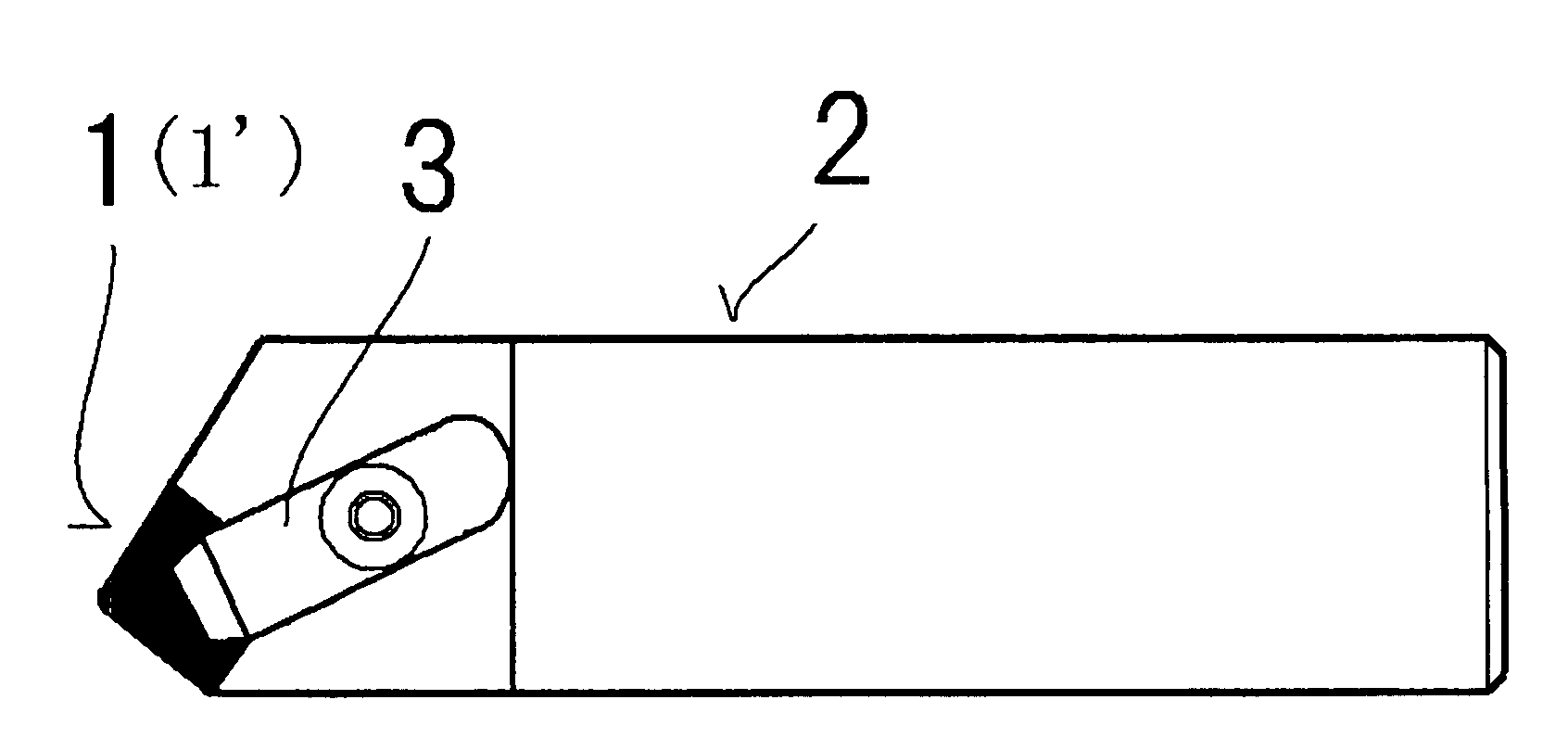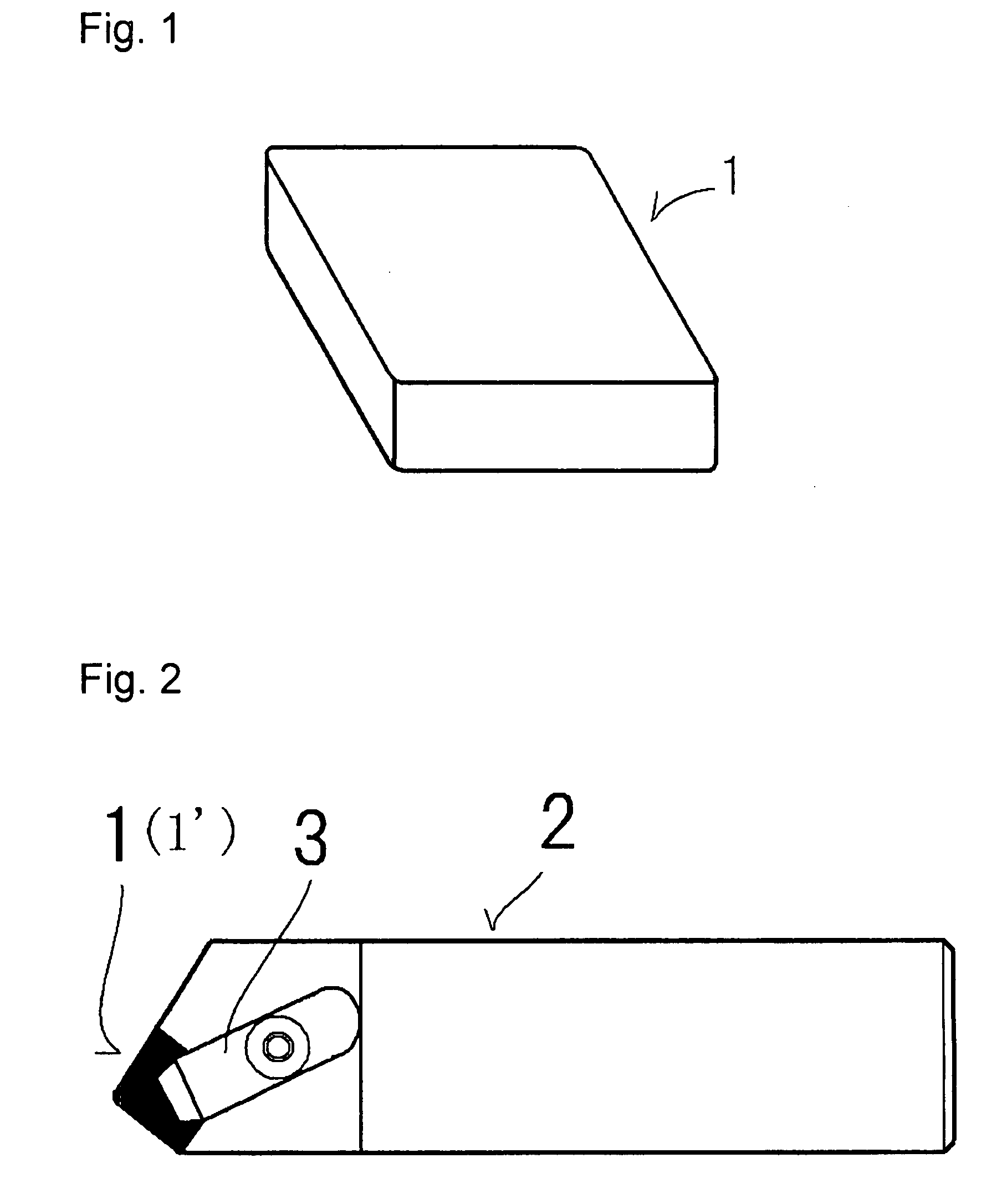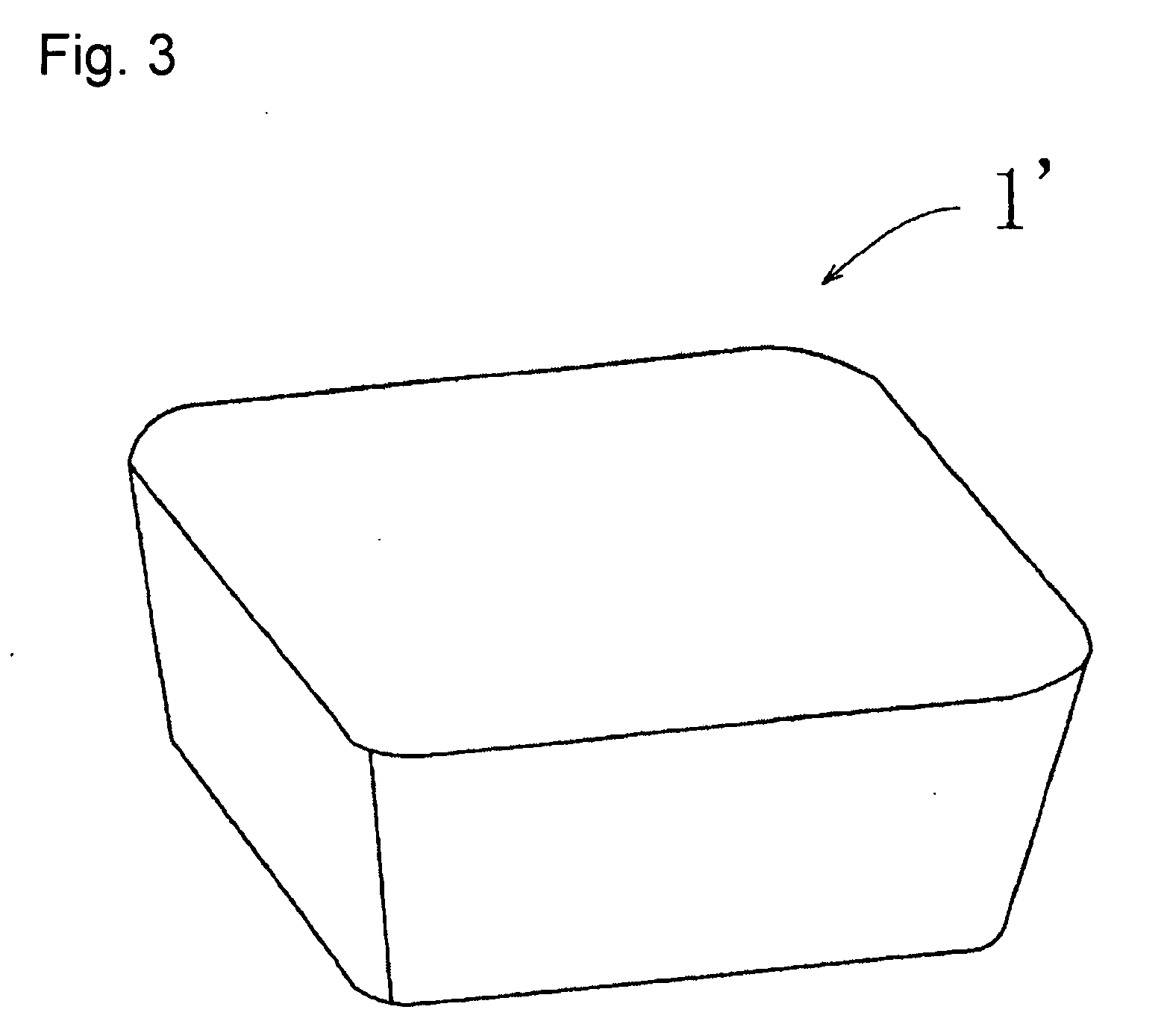Sialon Insert and Cutting Tool Equipped Therewith
a technology of cutting tools and inserts, which is applied in the direction of cutting inserts, turning machine accessories, manufacturing tools, etc., can solve the problems of reducing the life of the tool, affecting the roughness of the surface the dimensional accuracy of the cut material, so as to improve the fuel consumption rate of vehicles, reduce the weight of vehicle materials, and reduce the cost of production.
- Summary
- Abstract
- Description
- Claims
- Application Information
AI Technical Summary
Benefits of technology
Problems solved by technology
Method used
Image
Examples
working examples
A. Working Examples A-U and Comparative Examples *1-*11 for the First Invention
(1) Preparation of Insert
[0070]Powdery raw materials were prepared by mixing α-Si3N4 powder with an average particle size of 0.5 μm; a sintering aid selected from the group consisting of Sc2O3 powder with an average particle size of 1.0 μm, Y2O3 powder with an average particle size of 1.3 μm, CeO2 powder with an average particle size of 1.7 μm, Dy2O3 powder with an average particle size of 0.9 μm, Er2O3 powder with an average particle size of 1.0 μm, Yb2O3 powder with an average particle size of 1.1 μm, and Lu2O3 powder with an average particle size of 1.0 μm; and further Al2O3 powder with an average particle size of 0.4 μm and AlN powder with an average particle size of 1.3 μm, respectively in the amounts shown in Table 1 so that the powdery raw materials had the compositions shown in the same table. Then, each of the powdery raw materials was placed in a pot mill, the inside walls of which was made of S...
working examples 1-23
B. Working Examples 1-23 and Comparative Examples 1-7 for the Second Invention
(1) Preparation of Insert
[0084]Powdery raw materials were prepared by mixing α-Si3N4 powder with an average particle size of 0.5 μm; a sintering aid selected from the group consisting of Sc2O3 powder with an average particle size of 1.0 μm, Y2O3 powder with an average particle size of 1.1 μm, CeO2 powder with an average particle size of 1.7 μm, Dy2O3 powder with an average particle size of 0.9 μm, Er2O3 powder with an average particle size of 1.0 μm, Yb2O3 powder with an average particle size of 1.1 μm, and Lu2O3 powder with an average particle size of 1.0 μm; and further Al2O3 powder with an average particle size of 0.4 μm, AlN powder with an average particle size of 1.3 μm, TiN powder with an average particle size of 1.5 μm, TiC powder with an average particle size of 1.0 μm, and TiCN powder with an average particle size of 1, 0 μm respectively in the amounts shown in Table 2. Then, each of the powdery r...
working examples 24-41
C. Working Examples 24-41 and Comparative Examples 8-16 for the Third Invention
(1) Preparation of Throwaway Tip
[0115]Powdery raw materials were prepared by mixing α-Si3N4 powder with an average particle size of 0.5 μm; a sintering aid selected from the group consisting of Sc2O3 powder with an average particle size of 1.0 μm, Y2O3 powder with an average particle size of 1.3 μm, CeO2 powder with an average particle size of 1.7 μm, Dy2O3 powder with an average particle size of 0.9 μm, Er2O3 powder with an average particle size of 1.0 μm, Yb2O3 powder with an average particle size of 1.1 μm, and Lu2O3 powder with an average particle size of 1.0 μm; and further Al2O3 powder with an average particle size of 0.4 μm, AlN powder with an average particle size of 1.3 μm, and TiN powder with an average particle size of 1.5 μm respectively in the amounts shown in Table 3. Then, each of the powdery raw materials was placed in a pot mill, the inside walls of which was made of Si3N4, with Si3N4 bal...
PUM
| Property | Measurement | Unit |
|---|---|---|
| thermal conductivity | aaaaa | aaaaa |
| bending strength | aaaaa | aaaaa |
| temperature | aaaaa | aaaaa |
Abstract
Description
Claims
Application Information
 Login to View More
Login to View More - R&D
- Intellectual Property
- Life Sciences
- Materials
- Tech Scout
- Unparalleled Data Quality
- Higher Quality Content
- 60% Fewer Hallucinations
Browse by: Latest US Patents, China's latest patents, Technical Efficacy Thesaurus, Application Domain, Technology Topic, Popular Technical Reports.
© 2025 PatSnap. All rights reserved.Legal|Privacy policy|Modern Slavery Act Transparency Statement|Sitemap|About US| Contact US: help@patsnap.com



